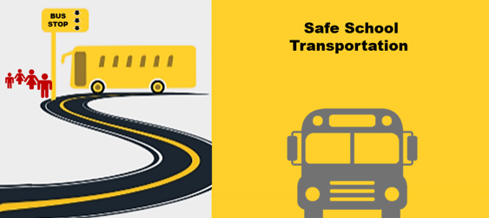
Safe transportation is a critical aspect of ensuring student well-being in schools. Whether it’s daily bus commutes or field trips, prioritizing transportation safety is essential. Let’s explore the significance of transportation safety measures and their role in safeguarding students on the roads in the Indian context.
School transportation-related accidents in India are a distressing reality that frequently makes headlines in newspapers and news platforms. Tragically, these incidents often result in injuries or even the loss of precious lives. According to a report published in the Times of India, in the years 2018 to 2022, 22,442 persons, including children lost their lives in bus accidents across the country. This highlights the dire need for enhanced transport safety measures.
Practical Tips:
- Vehicle maintenance: Ensure regular maintenance and inspections of school buses and transportation vehicles to prevent mechanical failures that can lead to accidents. Regular checks should include brakes, tires, lights, and other critical components.
- Trained drivers: Employ licensed and trained drivers who adhere to traffic regulations and prioritize student safety. Conduct eyesight checks for drivers, including periodic assessments, to identify potential vision-related issues that may impact their ability to drive safely. Additionally, conduct color blind checks to ensure drivers can accurately interpret traffic signals and signs.
- Contagious disease checks for bus maids: Conduct regular health screenings for bus maids, including checks for contagious diseases, to prevent the spread of illnesses among students.
- Seat belt usage: Promote a strict seat belt policy for all students and staff on school buses. Ensure that buses are equipped with proper seat belts and educate students on the importance of buckling up during transit.
- Behavior management on buses: Establish clear guidelines for student behavior on buses to maintain a safe and orderly environment. Teach students about proper conduct, such as remaining seated, keeping aisles clear, and refraining from disruptive behavior that may distract the driver.
- Route planning and monitoring: Develop efficient bus routes that minimize travel time and ensure timely arrival and departure. Implement GPS tracking systems to monitor the buses’ whereabouts and provide real-time updates to parents and school authorities.
- Emergency preparedness: Equip buses with emergency kits, including first aid supplies, fire extinguishers, and emergency contact information. Train drivers and bus staff on emergency response protocols, such as evacuation procedures and communication channels during crises.
- Communication with parents: Establish effective communication channels with parents to keep them informed about bus schedules, route changes, and any safety-related updates. Encourage parents to report any concerns or incidents promptly.
- Ongoing training and evaluation: Conduct regular training sessions for drivers and bus staff to enhance their skills and knowledge regarding transportation safety. Implement periodic evaluations and performance assessments to ensure adherence to safety protocols and identify areas for improvement.
Importance of Safety Audits and Safety Trainings: In addition to implementing these practical tips, it is crucial for schools to conduct regular safety audits and safety trainings through third-party agencies. Safety audits involve thorough inspections of transportation systems, identifying potential risks, and recommending necessary improvements. These audits help schools assess their existing safety measures and ensure compliance with regulations.
Safety trainings, on the other hand, provide essential knowledge and skills to drivers, bus staff, and other stakeholders involved in transportation. These trainings cover topics such as emergency response, student management, and adherence to safety protocols. By investing in these trainings, schools can enhance the competence and preparedness of their transportation staff, mitigate risks, and improve overall transportation safety.
Ensuring transportation safety in schools is a shared responsibility of schools, parents, transportation staff, and regulatory authorities. By implementing robust safety measures, conducting regular audits, providing ongoing trainings, and promoting open communication, we can create a safer environment for students during their journeys to and from school. Let’s prioritize transportation safety and work together to navigate the road to student well-being.
JUN
2023
